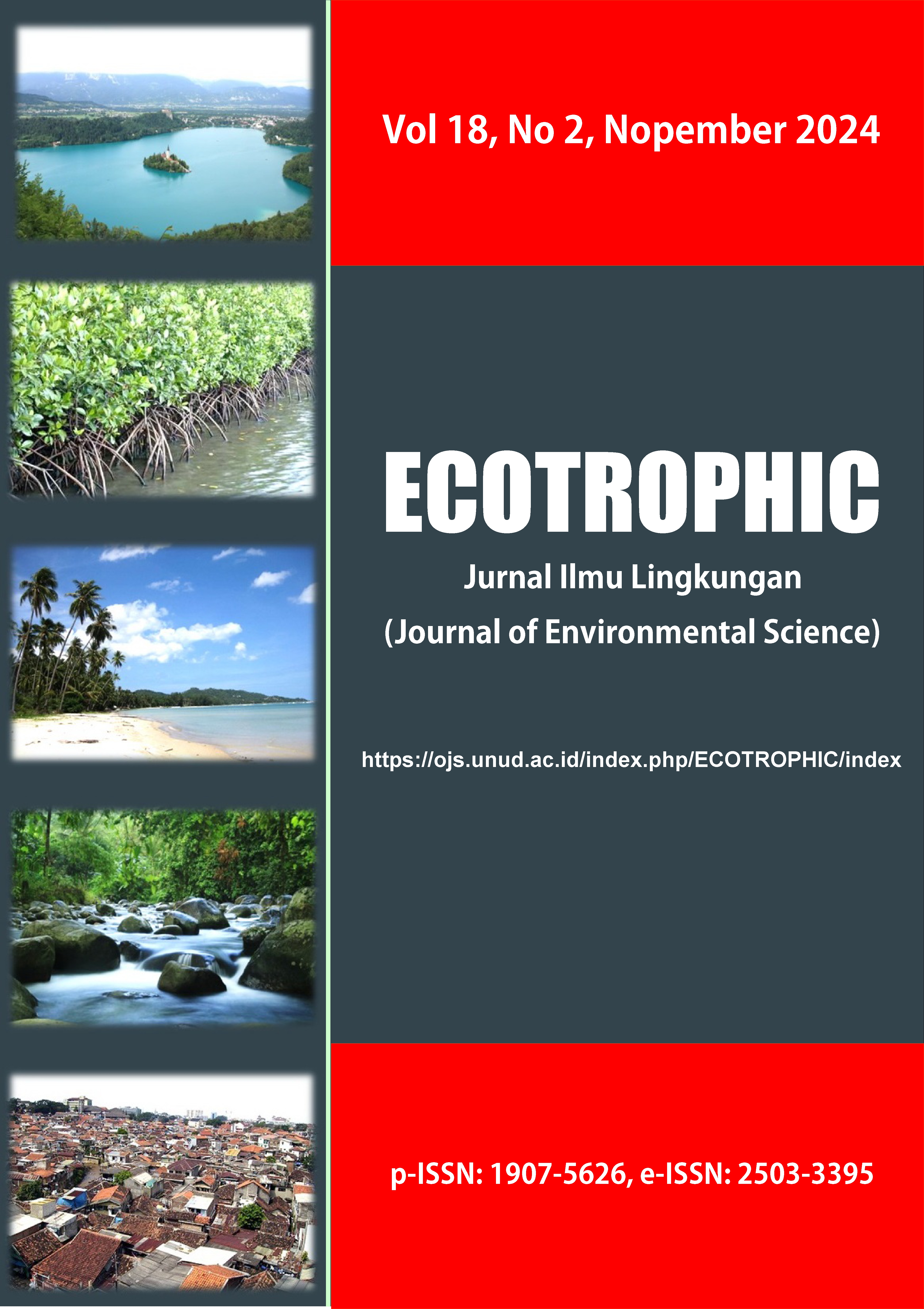KEANEKARAGAMAN EPIFAUNA DI HUTAN MANGROVE TELUK GILIMANUK, BALI
Abstract
The intertidal zone is a unique coastal region, between the highest and lowest tide lines, experiencing submergence during high tide and exposure as land during low tide. This condition creates a dynamic habitat with high biodiversity. This study evaluates the diversity and abundance of Gastropods in the intertidal zone of Gilimanuk Bay, which faces pressure from human activities such as fisheries, energy, and tourism. The research was conducted in September-November 2023. Epifaunal sampling was carried out using the 2m x 2m quadrat transect method at 16 stations. At each station, 5 quadrat transects were sampled. The results showed that 29 species from 14 epifaunal families were found in Gilimanuk Bay, with the Shannon-Wiener diversity index indicating a moderate category (2.26-0.79). The evenness index varied between stations, while the dominance index indicated no dominant species. This study emphasizes the importance of conservation and management of natural resources to maintain the diversity and stability of the Gilimanuk Bay ecosystem.
Keywords: Ecosystem; Epifauna; Diversity; Gilimanuk Bay
Downloads

This work is licensed under a Creative Commons Attribution 4.0 International License.


